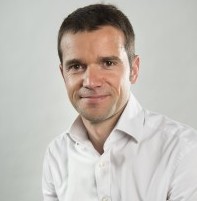The wide availability and convenience of cell-free kits has led to their increased use over the last few years.
However, despite the multitude of cell-free kits on the market, they do not allow as much flexibility as custom solutions. Indeed, the base reaction buffer is pre-determined and the addition of multiple components is limited. As a result, many users don’t obtain satisfying results with cell-free kits, and unfortunately they might have passed up a protein of interest and thus consider cell-free as an inefficient system.
Commercial cell-free protein synthesis kits are available from several suppliers, including NEB, Arbor Biosciences, Biotechrabbit, CellFree Sciences, Promega, Qiagen and Thermo Fisher Scientific etc. They generally provide DNA expression vectors that contain a genetic code or the gene of interest, promoters and other sequences to optimize cell-free protein synthesis and are generally based on coupled transcription and translation. They enable the use of PCR-generated linear DNA templates (Chong, 2014). These commercial kits are mostly derived from bacteria cell extracts of Escherichia coli, rabbit reticulocytes, wheat germ, and more recently from insect cells, CHO or human cells have been brought to the market.
In contrast, reconstituted purified translation system has also been developed (named PURE System) and employ a minimal set of purified components. They have the advantage of lacking, for example, nucleases and proteases that decrease the lifetime of DNA, mRNA and proteins (Rosenblum et al., 2014). The downstream process is also simplified due to the minimal composition of the reaction mixture (Casteleijn et al., 2013). However, the cost per mg of synthesized protein is much higher than with lysate-based kits and can only be used for small-scale production.
Cell-free synthesis kits offer basic solutions while custom-made cell-free systems go much further thanks to its open nature !
Nevertheless, commercial kits do not offer the same flexibility as custom-made cell-free systems, which are customizable and therefore allow adjustments of the reaction mixture composition based on the specifics of the protein to be synthesized.
Indeed, complex proteins and reaction mixtures have to be optimized and supplemented with salts, cofactors, chaperones and/or other additives to improve yields and ensure the folding is carried out correctly. (Rosenblum et al., 2014). Such optimization processes require specific know-how to be efficient and rapidly developed.
Then, disulfide bonded protein folding can be enhanced, for example, by a pretreatment of the cell extract with iodoacetamide, by optimizing the redox potential of the mixture through the addition of oxidized and reduced glutathione, and by adding chaperones and isomerases.
In addition, stabilizing agents, such as polyethylene glycols, polyols or amino acids can be added to the reaction mixture to reduce protein aggregation and precipitation (Kai et al., 2013). As an example, Synthelis identified two additives that enabled a 100 % expression rate of a Sanofi Pasteur vaccine antigen in soluble form that would have otherwise been produced with inclusion bodies in an E. coli cell-based system.
Finally, the custom-made cell-free system has a great advantage for the expression of transmembrane proteins which requires the addition of detergents or lipids in the cell-free reaction to obtain folded and functional proteins. For example, potassium channels Kv1.3 that consist of four alpha-subunits arranged around a central pore, were produced as proteoliposomes using lipids and detergent (Renauld et al., 2017). Then, the ion channel activity was verified using oxonol VI dye molecular probe (Cortes et al, 2018) to achieve successful results at the end.
In conclusion, although many cell-free kits are available on the market which can deliver interesting results, they do not offer as much flexibility and customization as homemade cell-free preparations. Indeed, difficult-to-express proteins, for example, generally require the addition of reaction mixtures to increase yields, solubility and protein functionality. Such supplements are possible with homemade cell-free solutions, as opposed to commercial cell-free protein synthesis kits.
 Custom-made cell-free system: fully open system, customizable and optimizable
Custom-made cell-free system: fully open system, customizable and optimizable
 Cell-free protein synthesis kits: closed system, customization and optimization not possible.
Cell-free protein synthesis kits: closed system, customization and optimization not possible.
Authors & sources
Casteleijn M.G., Urtti A., Sarkhel S. 2013. Expression without boundaries: cell-free protein synthesis in pharmaceutical research. International Journal of Pharmaceutics 440:39-47.
Chong S. 2014. Overview of Cell-Free Protein Synthesis: Historic Landmarks, Commercial Systems, and Expanding Applications Curr Protoc Mol Biol. 108: 16.30.1–11.
Cortes S., Barette C., Beroud R., De Waard M., Schaack B. 2018. Functional characterization of cell-free expressed Kv1.3 channel using a voltage-sensitive fluorescent dye. Protein Expression and Purification 145:94–99.
Kai, L., Dötsch, V., Kaldenhoff, R., Bernhard, F. 2013. Artificial environments for the co-translational stabilization of cell-free expressed proteins. PLoS ONE 8(2): e56637.
Renauld S., Cortes S., Bersch B., Henry X., De Waard M., Schaack B. 2017. Functional reconstitution of cell-free synthesized purified Kv channels. BBA - Biomembranes 1859:2373–2380.
Rosenblum G. and Cooperman, B.S. 2014. Engine out of the chassis: Cell-free protein synthesis and its uses. FEBS Letters 588:261–268.
Yin G., Swartz J.R. 2004. Enhancing multiple disulfide bonded protein folding in a cell-free system. Biotechnol Bioeng. 86(2):188-95



